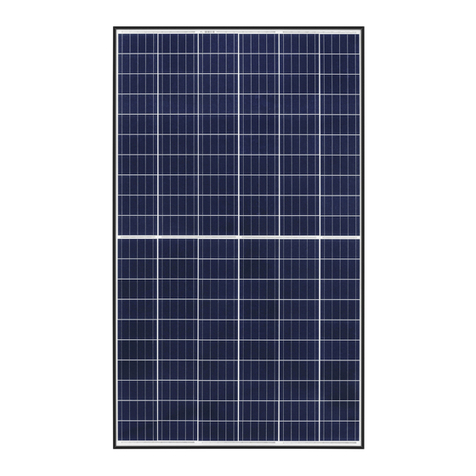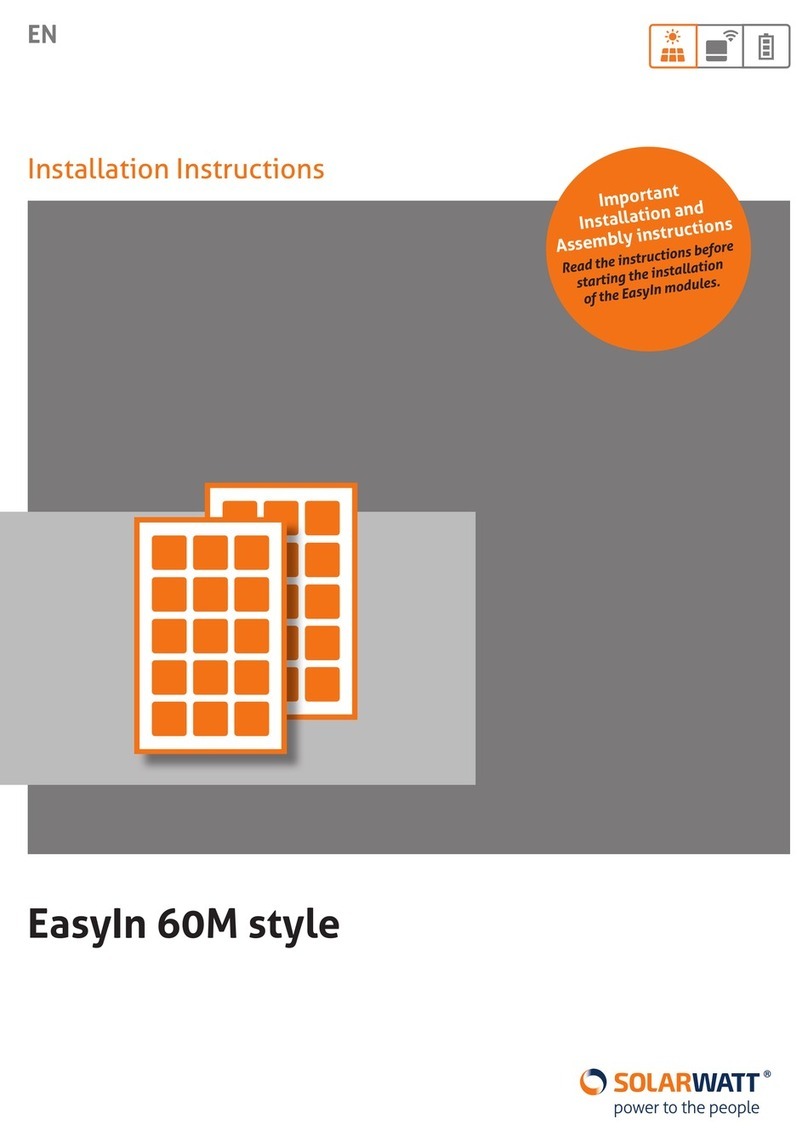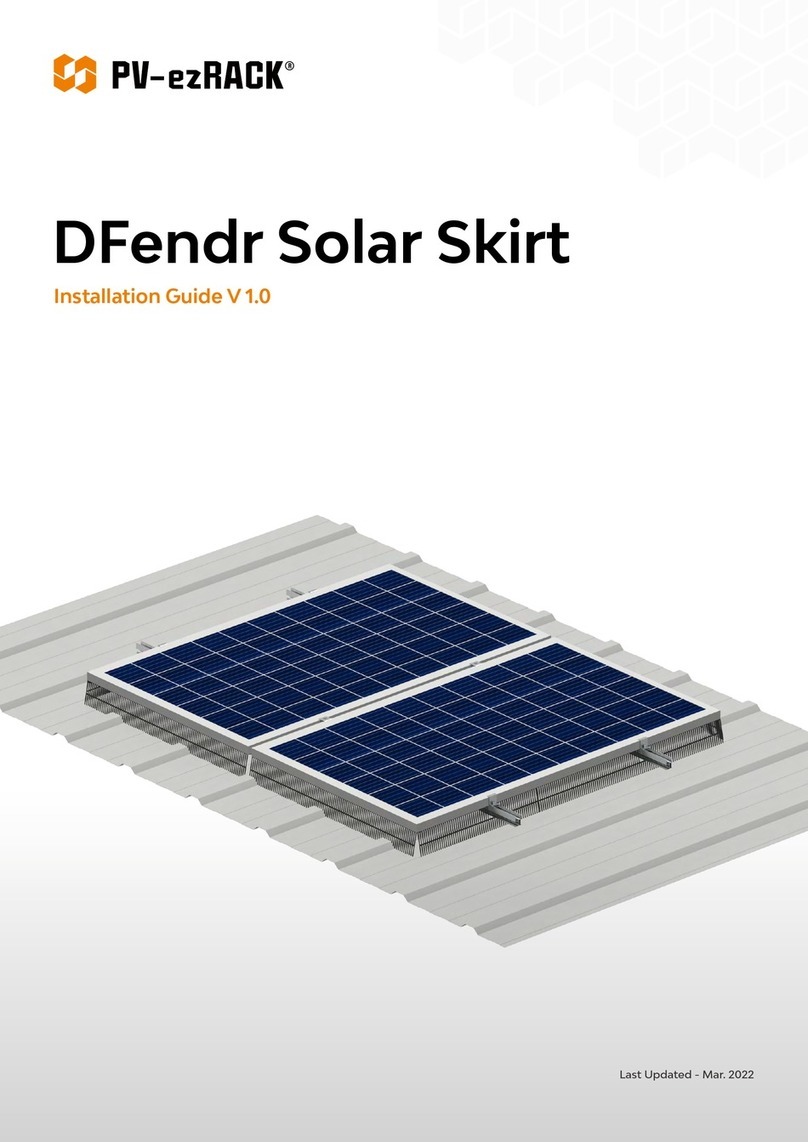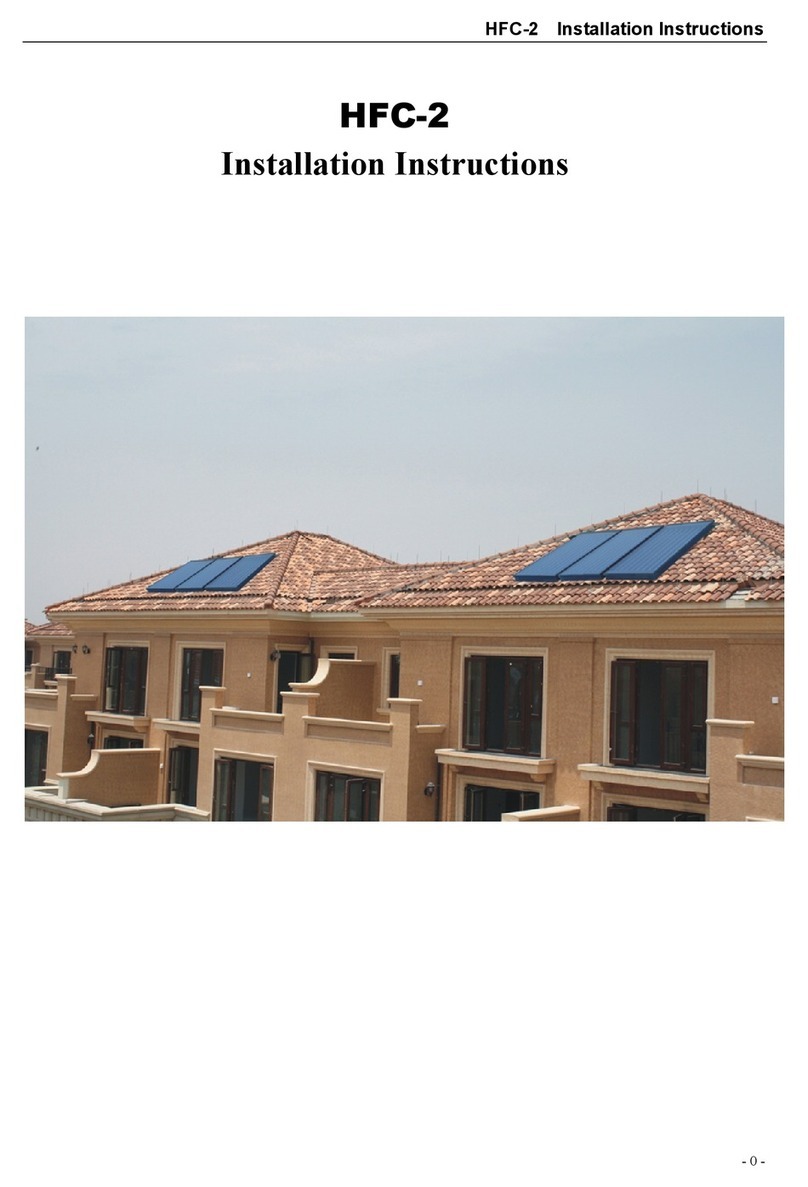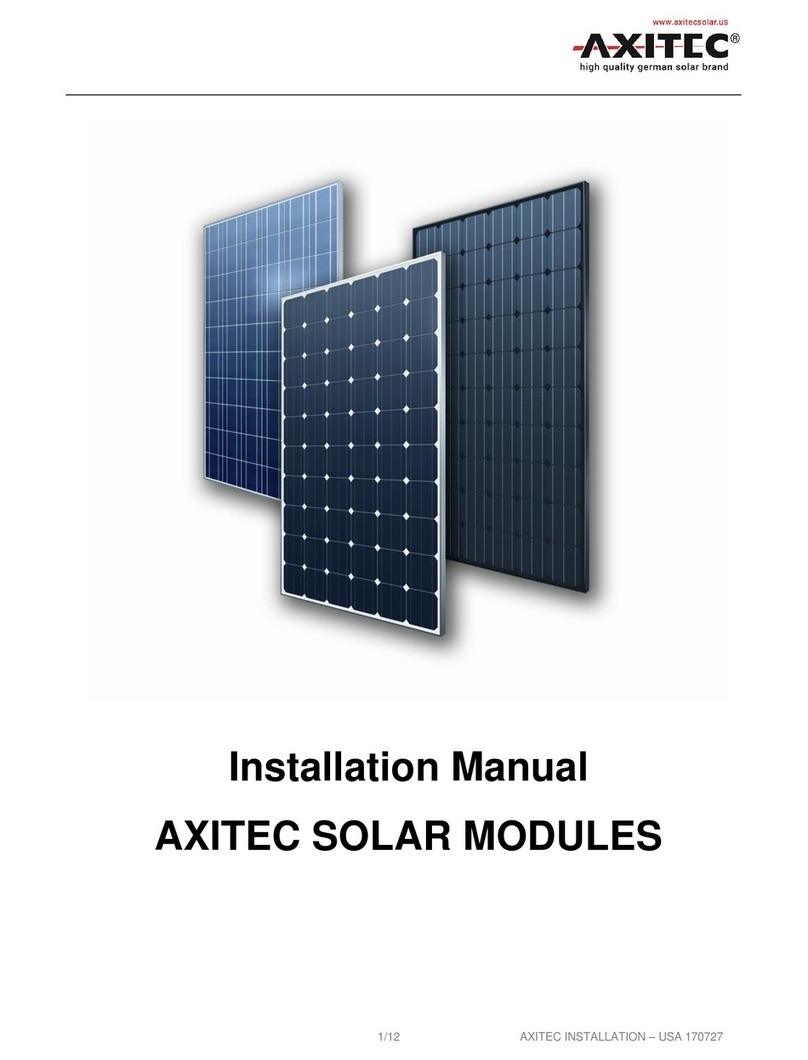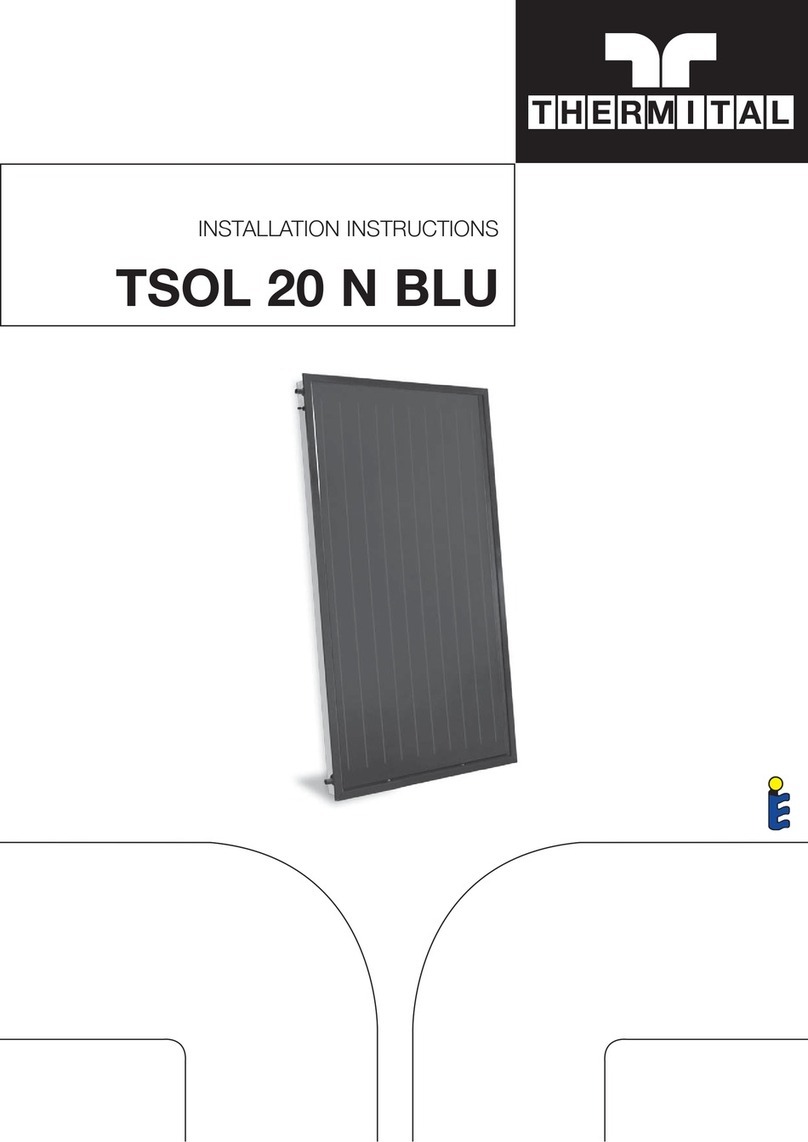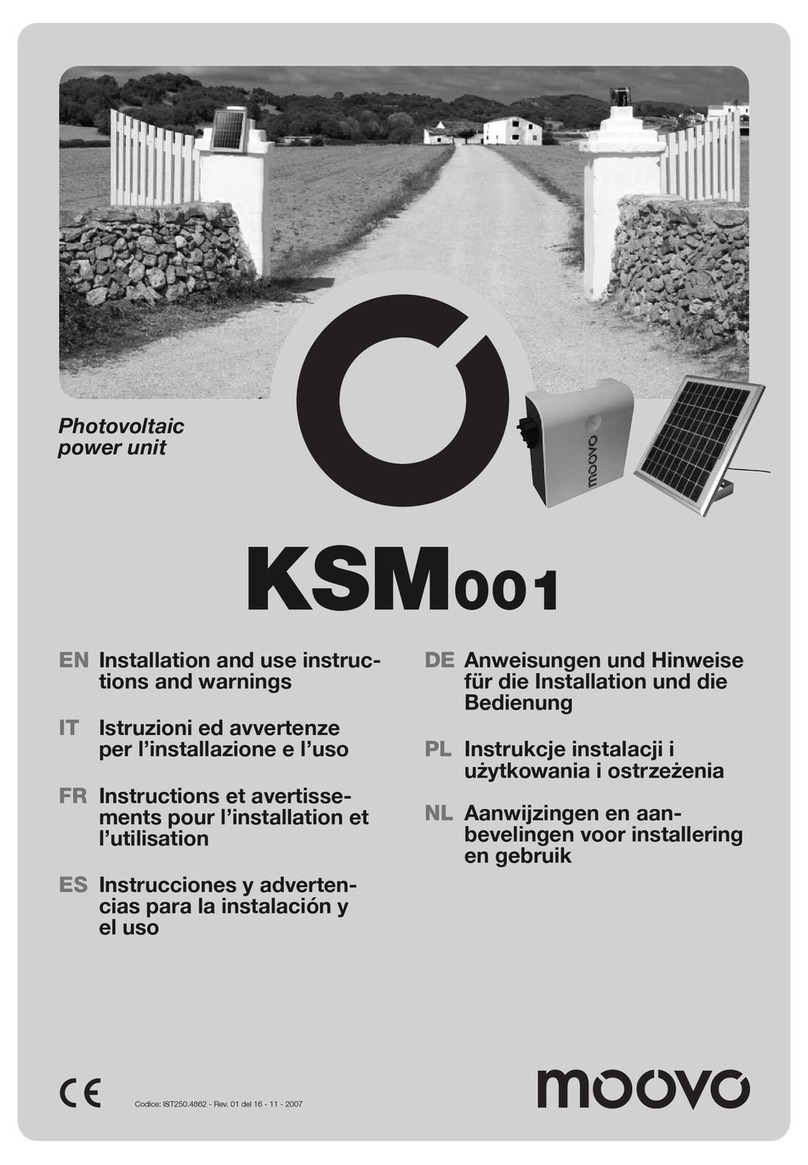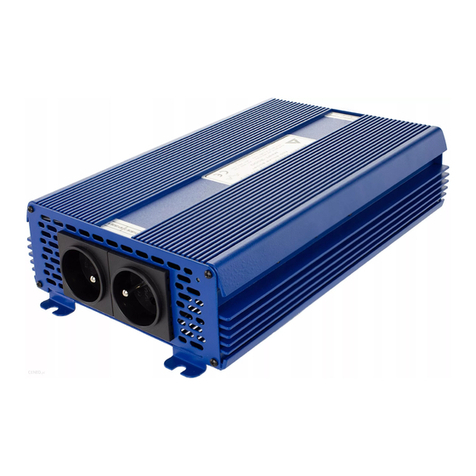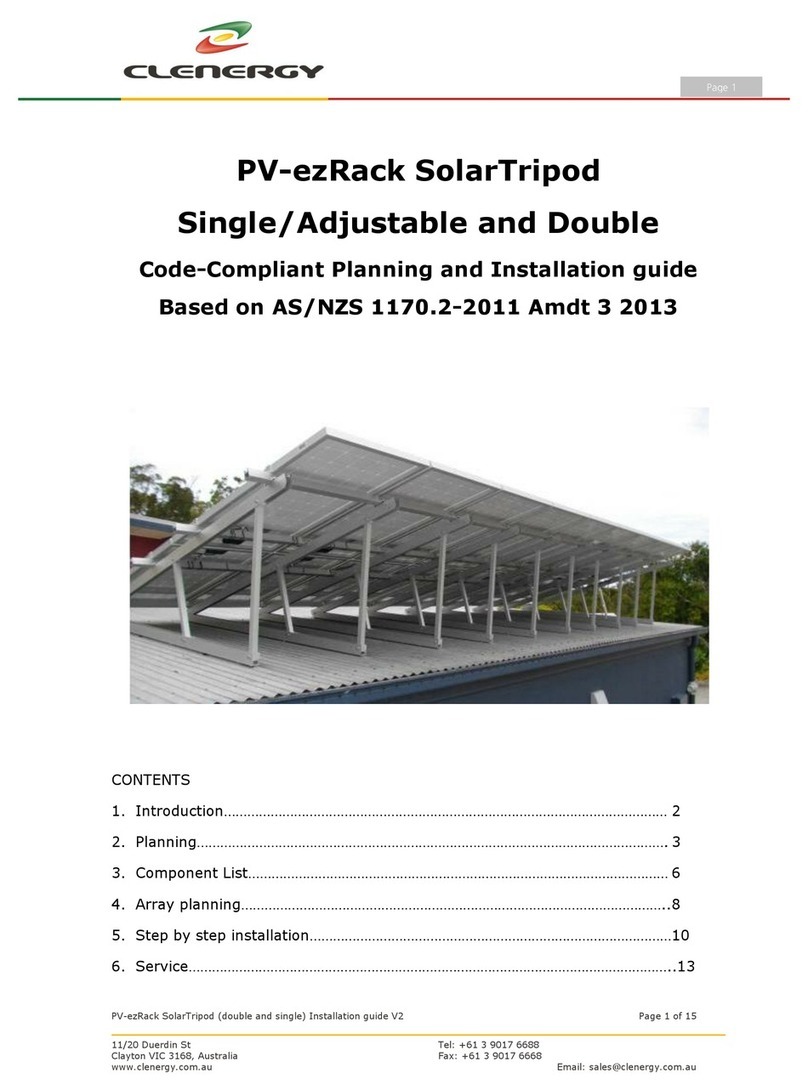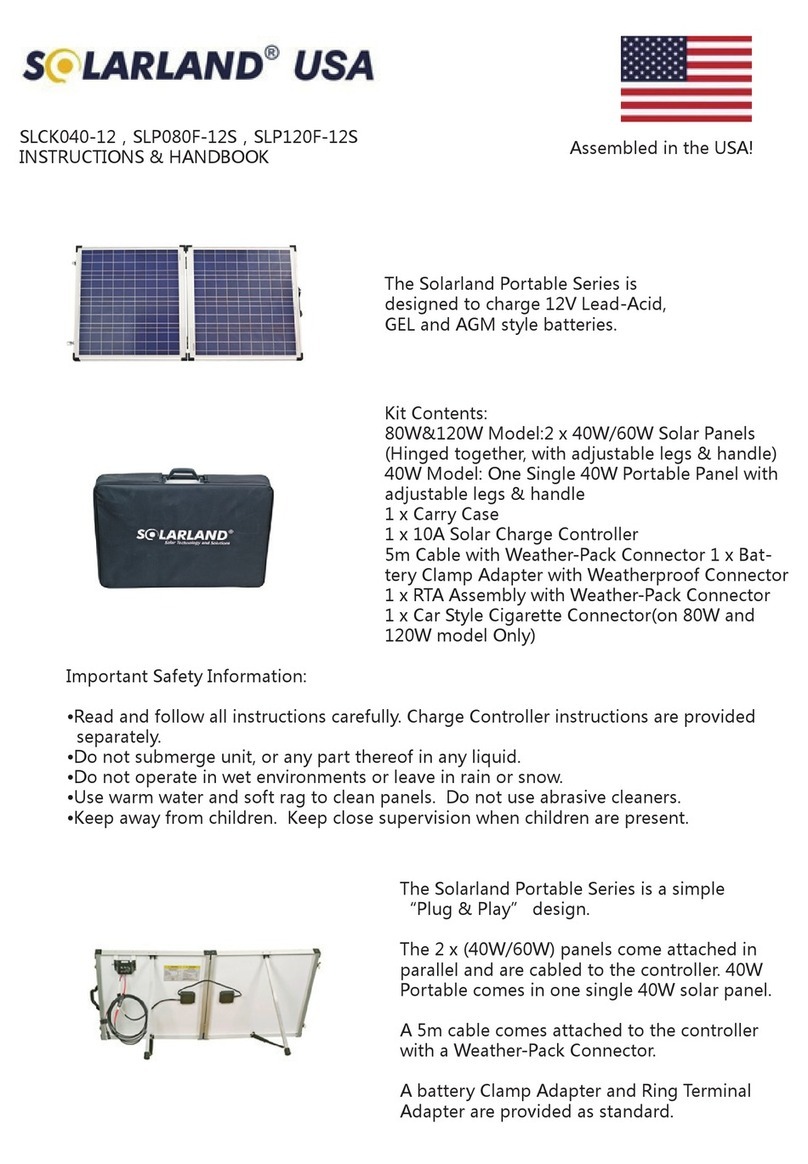
VIKRAM SOLAR INSTALLATION MANUAL DOC NO. VSL/ENG/WI/08/ Rev01
08
Modules can be connected in series to increase the operating voltage by plugging the positive plug
of one module into the negative socket of the next. Before connecting modules always ensure that
the contacts are corrosion free, clean and dry
Product can be irreparably damaged if an array string is connected in reverse polarity to another.
Always verify the voltage and polarity of each individual string before making a parallel connection.
If you measure a reversed polarity or a difference of more than 10 V between strings then check
the string configuration before making the connection. Module wiring should be performed by
professional expert installers in accordance with local regulations and national codes
PV modules can be connected in Series to have an increase in the Operating Voltage. The positive
connector plug of module is connected to the negative connector plug of another module until there
is a click sound. Only if there is a click sound assume the modules are connected
There can be irreparable damage done if the array strings are connected in reverse polarity. i.e.
if the positive end is connected to negative input of the string combiner box and vice versa. So
proper connection in the right polarity is recommended and if any reverse polarity is seen or any
difference of more than 10 V is observed, the string configuration connection needs to be checked
and connected appropriately
Vikram Solar modules are provided with standard copper cables with a 4 mm2cross-sectional
area and are rated for 1500V (IEC and UL) for maximum system voltage, 90oc and are UV resistant.
Ensure the cables are not exposed to water logged areas
A maximum of two strings can be connected in parallel without using over-current protection device
(fuses, etc.) incorporated in series within each string. Three of more strings can be connected in
parallel if an appropriate and certified over-current protection device is installed in series with each
string.
The maximum voltage of the system should be lesser than the certified system voltage (typically
1500V) or the maximum input voltage of the inverter. Since Voc α(1/T), the open circuit voltage of
the array needs to be calculated at the lowest ambient temperature for the location of power plant.
This can be done using the formula below,
Max System voltage = X * Voc * [1 + ((Tα-Voc (%) x (25 - Tmin))] ; Where
X - No: modules which are connected in series.
Voc - Open circuit voltage of each module (Refer to the Data Sheet)
Tα-Voc - Thermal coefficient of open circuit voltage for the module in Percentage (refer to Vikram
Solar Spec sheet)
Tmin - Minimum ambient temperature of the location of the plant
Solar array generates DC electricity once sunlight falls on the modules and the inverter is in active
mode once the minimum voltage and current requirements are met and is converted into AC Power
appropriately.
CAUTION:
The modules are rated to operate at potentially lethal DC Voltages which have the potential to cause
severe electric hazards in the form of shock, arcing and other fire hazards. Hence only trained
professionals are requested to operate on the panels and the DC solar array and the DC combiner
box. The PV modules are certified to operate at 1500V DC .
Always a rated isolator (DC Switch) is to be used to interrupt the current flow while disconnecting
the connectors. Even after disconnecting, the DC power may be active for some time, hence only
expert operators are recommended to operate upon the panels, string combiner box, etc. Vikram
Solar will not be responsible for any electrical accidents occurring in power plants using Vikram
Solar modules 08
07.ELECTRICAL CONFIGURATION
